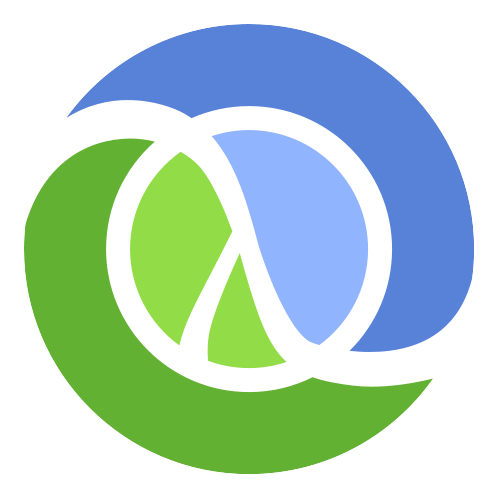Introduction to Clojure

Tools
 |
Topics
|

|
Functions
A function is an entity that receives "things" and return a "thing".

The beauty of functional programming is that the "things" that functions receive and return can be anything - including functions
In functional programming, functions are first-class citizens.
Functions
There are 3 ways to define a function and one way to call a function:
fn:
(def foo (fn [a b c] a))
(foo 1 2 3)#:
(#(+ %1 %3) 1 10 100)defn, you can add a documentation string to your function:
(defn bar "bar is a function with documentation"
[a b c] b)
(bar 1 2 3)Functions - (defn bar) vs. (def bar fn)
defn is a macro that associates metadata to the function that it defines:
(defn bar "bar is a function with documentation"
[a b c] b)
(meta #'bar) (:doc (meta #'inc)) Functions - Practice
(defn hello [name]) (defn zero-check [n]) Write a function called applicator that receives two arguments: a function and a "thing" and returns the application of the function on the argument.
(defn applicator [func number])
(= (applicator inc 19) 20) Lists
In clojure, Lists are simply linked lists.

List Creation
(list 1 2 "hello") (list 1 2 (list "a" "b") (list 1.2 (list 3.43243 2.5))) '.
'(1 2 ("a" "b" (1 2 4)))Functions on lists (List API)
(rest '(1 2 3 4 5))first:
(first '(1 2 3 4 5))(cons 1 '(2 3))count the elements of a list:
(count '(1 2 3 4 5))Lists - Practice
(defn fifth [lst])
(fifth '(1 2 3 4 5 6 7 8))
Write a function that receives a number n and a list and returns its nth element. You'll need to use recursion.
(defn nth-element [lst n])
(nth-element '(1 2 3 4 5 6 7 8 9 10 11) 10)
Write a function called select-1-5-7 that receives a list and returns a list with the elements of the original list at position 1 5 and 7.
nth-element or the clojure nth.
(defn select-1-5-7 [lst]) Vectors
Vectors are like Lists but with fast random access. 
Vector Creation
vector
(vector 1 2 3 4 5) []
[1 2 3 4 "aa" [1 2] [1 2 3]] Lists, you can access the first element with first:
(first [1 2 3 4 5]) (get [0 1 2 3 4 5 6 7 8 9 10] 7) list into a vector with vec:
(vec '(1 2 3 4 5))Vectors - Practice
(defn ->list [vec]) (defn present? [vec thing]) Maps
Maps are associative arrays (sometimes called dictionaries).
Basically maps are key-value based collections.

Maps - creation
There are a couple of ways to create a map:
-
With
hash-map:(hash-map :a 2 :b 3 :c 4 :d 5 :e 6) -
With the map brackets literals
{}:{:a 1 :b "aa" :c 'a}Pay attention that there is no meaning to the order of the elements inside a map.
Also, if you set a key twice, one will override the other.
Maps can be nested:
{:x {:a 1 :b "aa" :c 'a} :y [1 2 {:a 3}]}Keys and values can be of any types: lists, vectors, keywords, regexps and even maps and functions!
'{:email #"^([a-zA-Z0-9_\-\.]+)@([a-zA-Z0-9_\-\.]+)\.([a-zA-Z]{2,5})$" (1 2 3 4) list [1 2 3] vector {:d 1} map}
Maps - creation (cont.)
-
With
zipmap, you set the keys and the values separately:(zipmap (range 10) (range 100)) -
With
(into {}), you can convert a2darray into a map:(into {} [[:a 2] [:b 3] [:c 4] [:d 5] [:e 6]])
What methods don't support nested maps creations?
How many keys are there in this map: {[1 2] :aaa '(1 2) :aaa}?
How do you generate an empty map?
Maps - functions
With assoc, you associate (create or modify) one or more key-values
(assoc {} :a 1 :b 2)With dissoc you dissociate (remove) one or more key-values
(dissoc {:a 1 :b 2} :a :b)With assoc-in, you associate a nested key-value
(assoc-in {} [:a :b :c] 1)What will happen with (assoc-in {:a 1} [:a :b :c] 1)?
Maps - functions (cont.)
There are a couple of ways to retrieve values from a map:
-
get
(get {:a 1 :b 2} :a)When they key is not there,
getreturnsnil:(get {} :a)Meditate about this problematic code:
(get {:a nil} :a)What happens if you pass an additional argument to
get? -
get-in
(get-in {:a {:b 1}} [:a :b]) -
find
(find {:a 1 :b 2} :a)
Maps - functions (cont.)
-
the map itself is a function
({:a 1} :a) -
keywords are functions
(:a {:a 1})
You can retrieve the keys of the map with keys
(keys {:a 1 :b 2 :c {:d 1}}) And the values with vals
(vals {:a 1 :b 2 :c {:d 1}})Write an assertion using keys, vals and zipmap.
Maps - Practice
-
Write a function that returns the values for a selected collection of keys
(defn my-select-keys [m the-keys]) (= (my-select-keys {:a 1 :b 2}) [:a :b :c] '(1 2 nil)) -
Write a function that receives a map
mand a functionfand returns a map with the same keys asmand with the values transformed byf:(defn map-object [f m]) (= (map-object #(* 100 %) {:a 1 :b 2 :c 3}) {:a 100 :b 200 :c 300}) -
Write a function that converts a sequence into a map where the keys are the indexes of the elements in the sequence.
(defn sequence->map [s]) (= (sequence->map [10 20 30]) {0 10 1 20 2 30}) -
Write a function that checks if a map is a submap of the other.
Map m1 is a submap of m2 if all key/value pairs in m1 exist in m2"(defn submap [m1 m2]) [(true? (submap {:a 1 :b 2} {:a 1 :b 2 :c 3})) (false? (submap {:a 1 :b 2 :c nil} {:a 1 :b 2}))]
Sets
Set is a fundamental concept of mathematics.

Sets - creation
To create a set from a collection, you use set:
(set '(1 "hello" [1 2]))In a set, there are no duplicates
(set [1 1 "hello" "hello" [1 2] '(1 2)])Why [1 2] and (1 2) are considered as duplicates?
You can also create a set with the set literal #{}
#{1 2 "hello" [1 2]}But then, duplicates are forbidden!
#{1 2 3 1}What's the difference between set and distinct?
(distinct [1 1 "hello" "hello" [1 2] '(1 2)])You can also use (into #{}) to create a set
(into #{} [1 2 3 3 4])Sets - functions
In order to use the functions on sets, we have to require the clojure.set namespace:
(require '[clojure.set :as s])Why is there a quote in the require statement?
All the basic mathematical operations on sets are available:
-
Union
(s/union #{1 2} #{2 3} #{4 5 2}) -
Intersection
(s/intersection #{1 2} #{2 3}) -
Difference
(s/difference #{1 2 3 4 5} #{1 2} #{3 4})

You are on your way to become a clojure expert:
You already know about:
- Functions
- Lists
- Vectors
- Maps
- Sets
/